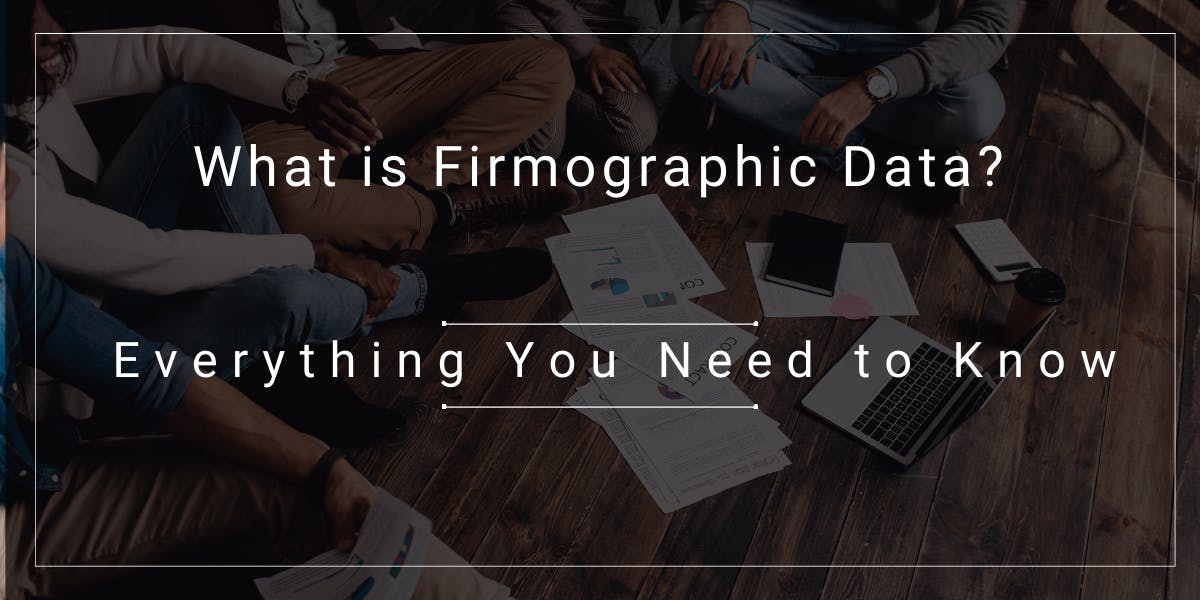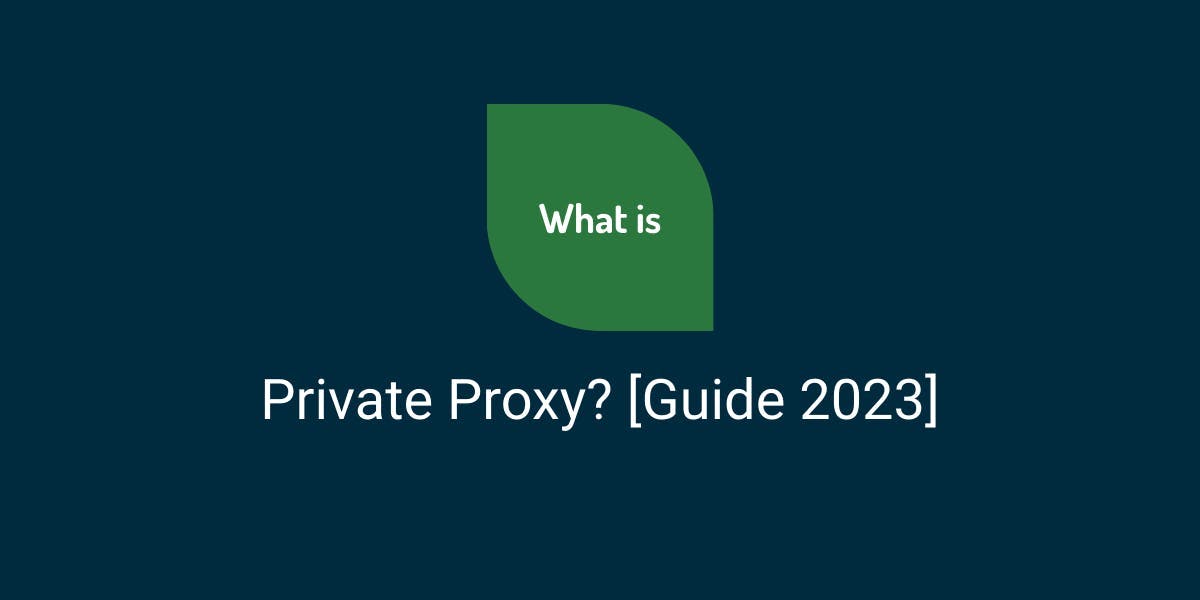What is Firmographic Data? Everything You Need to Know
Flipnode on May 08 2023

As a marketing strategy, personalization is now considered crucial by marketers and held to a higher standard than ever before. This is supported by a 2020 study which revealed that the majority of business-to-business (B2B) marketers believe that personalization improves customer relationships (77%), and increases conversion rates and growth (55%). However, many companies still struggle to come up with effective personalization strategies using existing data categories.
To address these challenges, B2B marketers should aim to develop a 360-degree view of both the decision-makers and the companies they work for. This is where firmographic data comes in. In this article, we will provide a comprehensive guide to firmographic data, including its benefits, how to obtain it, and the relationship between firmographic and demographic data.
What is firmographic data?
Firmographic data is a set of distinct data points that enable marketers and competitors to classify businesses and organizations. This information pertains to a company's operations and includes:
- Geographic location: This provides data on the area where a company operates, the number of offices it has, and their addresses.
- Industry type: This offers insights into a company's products and services, allowing marketers to identify potential sales leads, assess sales potential, and refine their marketing strategies.
- Customer type: This data helps to identify a company's customer base, whether it's B2B, B2C, or B2G, and whether that company could be a potential client.
- Company size: This data gives details on the number of employees, physical presence, and international reach of an organization.
- Total revenue and sales: This data provides financial figures for a company, including quarterly and annual revenue, losses, and expenditures.
- Type of organization: This gathers firmographic information about a company's organizational structure, such as whether it's privately or publicly owned, governmental or non-governmental, commercial or non-profit, as well as its legal status.
- Growth trends: These trends give insight into a company's growth progress, such as whether it's expanding, scaling down, holding steady, or just starting up.
Marketers heavily depend on a vast amount of data, including demographic data, to obtain valuable insights into their target audience's buying patterns, interests, and behaviors.
What is demographic data?
In the context of B2B marketing, demographic data comprises data sets that identify individuals within an organization. These may include information such as age, gender, cultural background, department, roles, and positions. Among these, the most significant data points for B2B marketing are typically the individual's roles, positions, and department.
Overlap between firmographic data and demographics data
To achieve optimal results, B2B marketers should focus on the individuals accountable for making purchasing decisions in a company. To do this, they should integrate demographic and firmographic data to comprehend the decision-makers, their work environment, and the company they belong to.
By combining demographic and firmographic data, B2B marketers can create a personalization template for segmented marketing. This approach overcomes the limitations of relying solely on firmographic or demographic data alone. Specifically, it provides more detailed insights into the target audience and helps compensate for the lack of sufficient data that may occur when using just one type of data.
The Evergage Trends in Personalization study has addressed these challenges effectively. According to the study, 58% of B2B marketers lack sufficient data and insights to carry out effective personalization. In contrast, the proportion for B2C companies was only 39%. Additionally, 31% of marketers said that low-quality data prevented companies from prioritizing personalization efforts.
Benefits of firmographic data
Firmographic data is beneficial when used together with other data types, such as demographic data, to provide marketers with a comprehensive understanding of their potential customers. It enables marketers to categorize customers into market segments, with some considered qualified leads while others are unqualified. There are several advantages to using firmographic data, including:
- Personalization of marketing efforts
- Building effective sales funnels
- Assessment of long-term buying potential
- Improvement of account-based marketing (ABM)
- Prevention of wastage of resources.
Personalization
Personalization has become increasingly important for winning the business of B2B buyers who want to be treated as individuals, not just numbers. As a result, marketers have made significant strides in tailoring content to their target audience across various channels such as email marketing, mobile messaging, search engine marketing, video ads, and more.
The 2020 State of Marketing report found that over 60% of marketers improved personalization in each of these channels, with enhanced audience segmentation ranking second.
These statistics highlight the need for marketers to move beyond creating generic buyer personas, which is common in B2C marketing and instead utilize a combination of demographic and firmographic data to create specific customer profiles.
Building funnels
In B2B marketing, the sales funnel encompasses the gradual steps that a potential customer must go through to convert into a paying customer. This journey is typically more extensive than that of B2C marketing, as sales and marketing professionals must cultivate business leads over a more extended period through lead generation efforts. This is due to the greater number of decision-makers, the necessity for product demonstrations, a more extended approval process, and the need for an extensive ROI analysis.
Fortunately, firmographic data provides sales and marketing teams with the ability to pinpoint promising prospects and personalize their lead generation strategies. By doing so, they can streamline the journey towards becoming a customer.
Evaluating long-term purchasing potential
Establishing a long-term customer relationship can significantly benefit businesses. It can lead to increased revenue due to frequent purchases and reduce the budget for sales and marketing campaigns.
However, this is only possible if the company has the capability to continue paying for the product over an extended period. This is where firmographic data plays a critical role. By analyzing firmographic data examples such as annual expenditure, revenue, company size, and market share, businesses can identify companies that are viable targets for new top-of-the-line products or product renewals.
Enhancing account-based marketing (ABM)
According to the 2020 State of Marketing report, ABM received a budget allocation of 16%, ranking third after advertising (18%) and technology (17%). This demonstrates the importance of ABM, particularly in the post-COVID-19 era. ABM involves identifying and targeting high-value, best-fit accounts, a task that is made possible by firmographic data. In addition to aiding in the identification process, firmographic data is also instrumental in facilitating personalization.
Prevent wastage
By leveraging firmographic data, you can focus your marketing efforts on the most relevant and promising prospects, minimizing guesswork and optimizing your advertising campaigns to increase ROI. This data enables your sales and marketing teams to avoid squandering advertising budgets on uninterested or unqualified leads, ultimately helping your company save money and drive growth.
How to acquire firmographic data
First-party data collection
B2B marketers have multiple options to gather firmographic data. They can conduct surveys that provide real-time and up-to-date information while allowing marketers to extract the specific information they need. Alternatively, they can leverage their in-house customer relationship management (CRM) software.
CRM software consolidates customer and prospect data into a centralized database, reducing information silos and enabling easy access, analysis, and utilization of firmographic data.
Third-party data collection
Similarly, third-party sources provide an opportunity for collecting firmographic data. These sources consist of publicly available databases, subscription-based research websites, customer data platforms (CDP), government websites, and company websites. In addition, company filings with the relevant authorities, tax declarations, registers of organizations, and white paper articles and reports are also valuable sources of information.
Web scraping is a significant tool in collecting data from these sources. It involves the automatic process of extracting publicly available firmographic data from websites.
Although web scraping is a useful tool to collect publicly available firmographic data, it may encounter obstacles. To protect their web servers, companies, F, and site owners often use anti-scraping measures such as CAPTCHAs, honeypot traps, user agents, IP address blocking, and others.
However, advanced web crawling and scraping tools can bypass these measures and allow for easy access to the desired firmographic data.
Conclusion
Firmographic data, when combined with demographic data, offers a comprehensive understanding of a company and the individuals who make decisions within it. This enables segmented marketing and personalized content, which, according to business buyers, significantly impacts their purchasing decisions.
First-party and third-party sources are the primary sources of firmographic data. Advanced web scraping solutions are essential in collecting crucial publicly available data from third-party sources smoothly.



